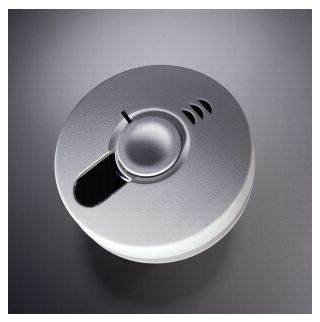|
|

Two common types of smoke detector found in residential homes may also be found in some postal facilities. The two types of smoke detectors are ionization and photoelectric detectors. Ionization smoke detectors contain a very minute amount of radioactive material known as Americium 241. Photoelectric-type smoke detectors do not contain any radioactive material. The amount of radioactive material contained in ionization smoke detectors is so small it does not pose a risk to human health. If the detector contains radioactive material, it is required by law to have a warning label on the body of the detector. Look for the label on the back of the detector facing the mounting base.

The label may have the international symbol for radiation (as shown). If the smoke detector does not include either the warning or the radiation symbol on the label, and if there is no evidence the label has been removed or destroyed, it is safe to assume the device does not contain any radioactive material. If the label is missing or destroyed, treat the device as if it is an ionization unit. These detectors do not last forever, and at some point they need to be disposed. Proper disposal of ionization units is described below. Some state and local laws and regulations prohibit the disposal of ionization smoke detectors in the municipal waste stream. For this reason, smoke detectors containing radioactive material should be returned to the manufacturer for disposal. If the manufacturer refuses to accept the return of the smoke detector, check with your local governmental agency or contact the Office of Sustainability via email at sustainability@usps.gov.
When returning a detector to the manufacturer, include a note indicating the detector is to be disposed of, and mail it to the address listed on the back of the detector. The following smoke detector manufacturers/distributors will take back their smoke detectors:
|
|
